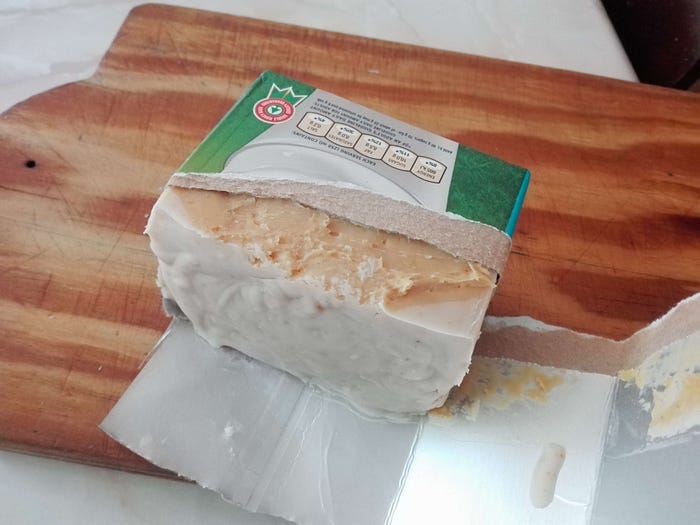
The easiest way to boost team innovation
Practical tools to cultivate a flexible mindset
In a previous post, I addressed what an agile mind looks like. It contains ten characteristics of an agile mindset, of which the first is the importance of having a flexible mind.
Flexibility being defined as the ability to overcome challenges and embrace change, much like water finding the path of least resistance, flowing around rocks and other obstacles in it’s way, rather than trying to push through it.
Traditional (read un-agile) management, however, favors the pushing through obstacles method over that of finding alternatives. Following a plan is valued more than responding to change, so when something unplanned happens, which pretty much can be guaranteed in any sprint, the team needs to push harder. More hours, more team members, more resources to get the job done. More is better, right? As long as we follow the predictable plan. Wrong.
Less is more. If you want to be creative, innovative and flexible, that is.
Having less defined processes and procedures is more flexible, more agile.
Having smaller teams with fewer team members improves communication and are more agile.
Having less resources,yes, that’s correct, less resources, are more creative, more agile.
Less is more
I plead guilty that I too once was a complainer who included sentences started with “if only”. If only, we had more time. If only, we had a better tool to do the job. If only, we had better requirements.
A sure sign of an inflexible mindset — the opposite of an agile mindset.
Another favorite of this inflexible mindset includes sentences that blame or justify why something couldn’t be done. We couldn’t do it because…. Or I would have done it, but…
Fact is, what you look for, you will find.
I’ve been on a casual reef dive where we were a group of about ten, and on our safety stop at the end of the dive, a black tip reef shark unexpectedly and curiously came to investigate these weird looking school of fish, before whizzing away at the speed of lightning as we started moving. When we surfaced and started talking about the dive, only me and one other diver saw the shark.
The rest didn’t see it, because they weren’t expecting it. It was a reef dive, not a shark dive. That taught me an important lesson.
We tend to see what we expect to see.
I’ve also been on dives where we planned to see sharks, and 90–95% of the time we found them. Similarly, if you need a reason to justify why you didn’t deliver at work, you will most certainly find one.
We are inherently creative
Proof of our inborn creativity. We are masters to shape the world around us when we respond to our environments, flowing around the rocks in the riverbed without any effort.
Inherently we know that it’s easier to find the path of least resistance, than try to push through. Yet, we choose to mostly use this creativity to find reasons to avoid punishment, rather than to find solutions to overcome our obstacles.
If only we turned around our thinking process to look for alternative ways to do things when our resources are limited, we would improve team morale, productivity and profitability. Our habits are what stops us from being more flexible, so if you want a more flexible mindset, you have to form new, creative habits.
Habit is the enemy of innovation.
To cultivate a habit of innovation, every day practice your creative muscles by doing something you’re not used to doing, even if it is brushing your teeth with your left hand. Here are some more ideas to get you started:
Creativity booster #1 — Learn something new
Preferably in a field that doesn’t involve anything you need in your day job. Improving your current skillset is simply strengthening your existing brain muscles — the ones that you are already good at using — whereas what you want to do is to build new muscles — ones you haven’t used in a while.
I’m currently learning French, a bit of science, and more about print and graphic design. I’m also learning about the properties of different foods and what health benefits each have. Before that, I studied web design and basic photography principles. I also studied digital marketing methods, coaching, and education best practices to name a few.
Each time I am involved in a software development project, these unrelated new skills is what helps me to be better, more creative, more flexible in my thinking.
Creativity booster #2 —Make something
I’m a book lover, and for years I was engulfed in book knowledge, devouring any book I could find. The more I read the more I wanted to read.
And then one day I realized that I’m so obsessed with getting the knowledge, that I don’t have any time for using the knowledge. I promptly stopped reading and haven’t read a book bar some historic novels and short articles (which I’m still mildly obsessed with) in years.
Instead, I started finding new, unfamiliar problems or projects to solve, where I had a specific goal and needed to find ways to meet this goal, but without any of the resources — including the knowledge.
It’s impossible to fall back on old habits if you’re faced with an unrelated problem.
Currently, I’m experimenting with making home made soap and beauty products. I found some recipes on the internet, bought some oils and other basic ingredients, but tried to source as many ingredients as possibly by re-using or recycling rather than purchasing, including the packaging.

First batch of soap, curing in an empty milk container.
For example, the ingredients I use are inspired by left-over food in the house, currently papaya (there are a few papaya trees on the property meaning more papaya than what you can eat), used rooibos tea-bags and coffee grounds.
As apposed to buying a bulbine frutescens plant — one of my main ingredients, which is massively expensive and unavailable — I asked a stranger living down the road if I can have a plant from their garden. Not only did I get a more sustainable and cheaper way to produce my products, I also made a new friend! Win-win.
The most satisfying thing about making something yourself, is the ability to see, touch, smell and use what you’ve made. The added bonus — it practices a flexible mindset.
Creativity booster #3 —Travel
My first overseas trip was when I was in my early twenties, and since I haven’t stopped traveling. I love how you are bombarded with the fresh new-ness of an unknown country and learning about the history and culture of countries.
Traveling opens your mind.
Travel has been the biggest source of ideas and inspiration for me by far, and the greatest tool in helping me to become more flexible in my thinking.
When you travel to a country like Bulgaria or Thailand, where you are not able to speak the language or even read the signage, you’re forced to find creative ways to communicate.
You’re also guaranteed that somewhere during your travel, you’ll need to solve an unexpected problem. Either the accommodation you booked made a mistake and overbooked you, the transport changed, or you get lost. Or in my case, a tsunami hit as I arrived, washing away our entire itinerary, and twice I discovered that the place we booked for a week didn’t have any Forex or banking facilities close-by.
No matter how good you plan, something unplanned will happen, causing conflict with your travel partners that needs to be resolved.
And you don’t have to travel abroad in order to be a traveler. At a stage I didn’t have any money to travel further than about 50km at a time, let alone leave the country, so I made a point of discovering something new within my area. I found that what I discovered was as satisfying, as I came across hidden treasures which I could share with my friends.
Conclusion
To cultivate a flexible mind,you need to get out of your comfort zone. Do something new, learn something new. Push yourself.
If it wasn’t for being pushed out of his comfort zone, Richard Branson could still be the shy little boy he used to be. Thanks to embracing the discomfort of new experiences, he is now one of the world’s most successful and most loved business men.
Originally published on Medium: https://everydayagile.com/the-easiest-way-to-boost-team-innovation-42b13439620b
